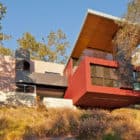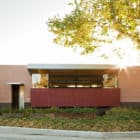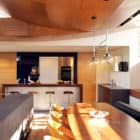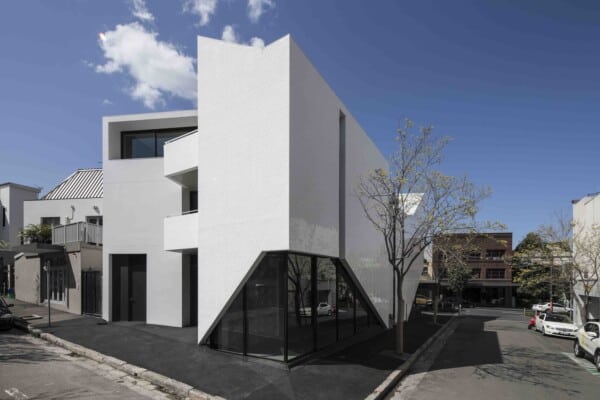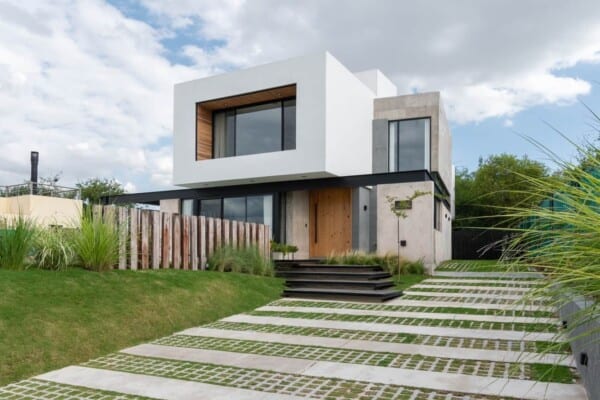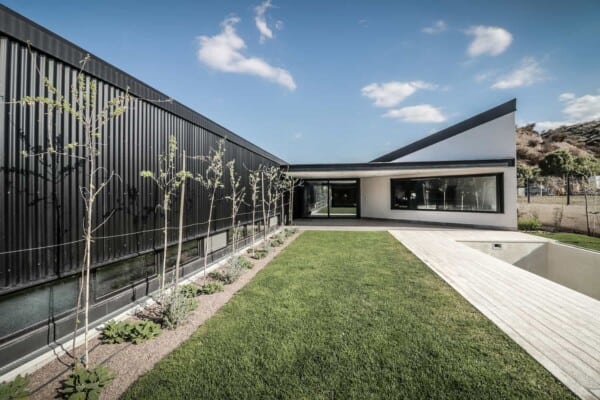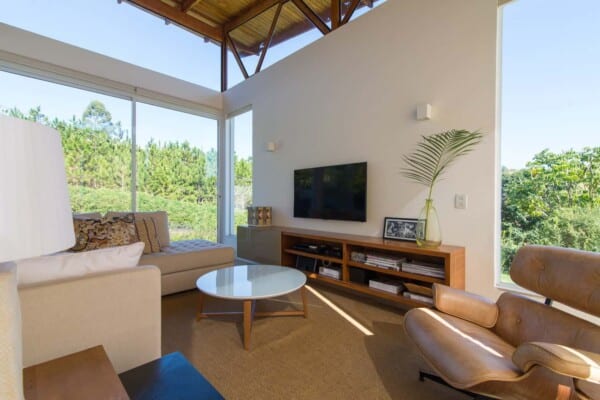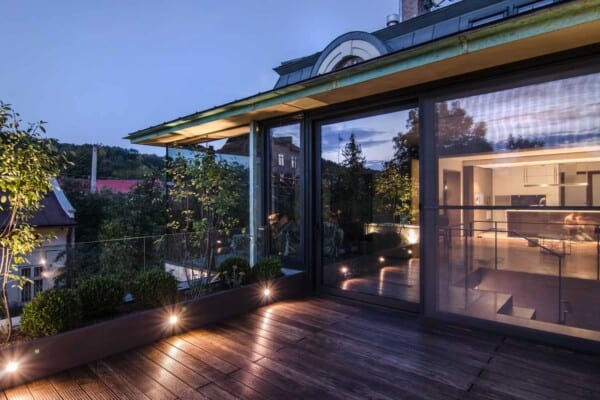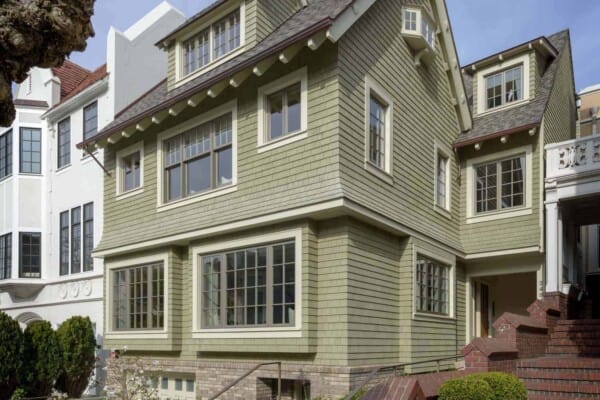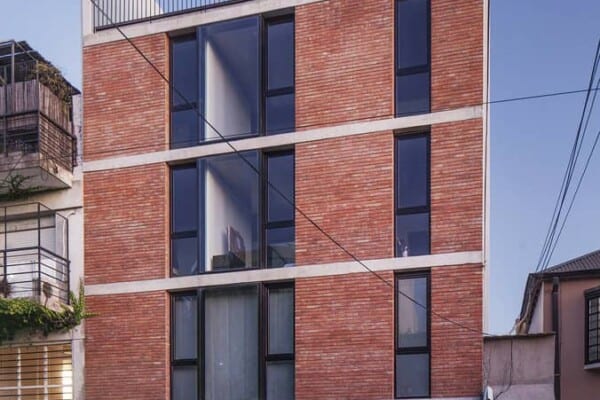Kovac Architects created this contemporary residence in 2010 for the firm’s founder, Michael Kovac.
Located in Pacific Palisades, California, USA, the home is a study in sustainable architecture.
Materials used to construct the house include formaldehyde-free plywood, recycled glass tile, reclaimed wood, and photovoltaic panels.
Sycamore House by Kovac Architects:
“Designed as the home of firm Principal Michael Kovac, Sycamore House serves as a laboratory for the firm’s ongoing research into sustainable architecture and a showcase for Kovac’s design philosophy.
The home’s seamless integration of environmental systems and green materials has made it one of the first in California to garner Platinum Certification from the USGBC LEED for Homes Program.
Sycamore House takes its name from three beautiful trees on the site that originally attracted Kovac to the property; the simple geometry of the house is driven by the steeply descending site.
Nestled into the downhill side of a ridge top street, the 3,400 square-foot home presents a deceptively modest one-story face to the street, while a view from below reveals a series of sculpted volumes over three floors.
Inspired by the surrounding sycamores, Kovac commissioned artist Jill Sykes to turn the minimal street facade of recycled fiber cement panels into a canvas into which her subtle shadow patterns were etched.
A 23-foot tall interior concrete wall anchors Sycamore House to its site and organizes the house formally and functionally.
The wall’s weighty presence provides an elegant counterpoint to a delicate cantilevered stair connecting the upper living spaces to private spaces below.
Its thermal mass helps to regulate air temperature while its vertical expanse encourages natural ventilation, both guiding warm air to clerestory windows and drawing cool canyon breezes from below.
Photovoltaic panels provide for nearly all of the house’s power needs, and a green roof insulates the home and reduces storm water runoff.
The house also employs an array of sustainable materials, including high fly ash content concrete, Forest Stewardship Council (FSC) certified woods, reclaimed wood flooring, zero-VOC paints, recycled glass tile, formaldehyde-free plywood, and high efficiency plumbing fixtures and appliances.
The effort toward maximum sustainability extended beyond the design of the new home to encompass the ‘deconstruction’ of the existing house on the site.
Prior to its removal, site vegetation was cleared by a herd of grazing goats. Interior fixtures and appliances were removed and donated to Habitat for Humanity, while framing lumber was re-used elsewhere in low-income construction.
Overseen by The Reuse People, a nonprofit corporation dedicated to keeping usable building materials out of landfills, the process repurposed a minimum 75% of the existing building material.”
Photos by: Lisa Romerein














